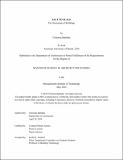| dc.description.abstract | We exist in thick layers of ancient minerals and material formations that perform to shape human architectural practices. Yet, with a continuous desire to force materials into designs, humanity has never ceased to disregard the active strength of a material to perform with time. The next twenty years align with a future of salt in the form of a dynamic, preservative, and corrosive mineral that shall never expire from Earth’s crust. Nevertheless, aspiring to mine, build, maintain, and preserve, humanity remains in constant search of other more durable materials designed with the presumption to last forever.
Salt is certainly not the neutral product of a chemical reaction. It actively performs to preserve, corrode, accumulate, or maintain humanity’s creations. Embracing its ability to expand and reduce timescales, I investigate salt as a material that provides both corrosive and preservative properties offering current architectural practices the choice and responsibility of building for eternity or for a finite moment.
I explore ancient salt cycles shaping the last human activities remaining on the Eastern coast of the Mediterranean, in Anfeh, Lebanon. Molded into a series of geo-cultural objects, salt containers embrace their materiality and escape the dullness of a mold to acknowledge the continuous cultural cycles that exists between time, salt, and its people.
This thesis invites current design and construction practices to think across new intervals of time that reflect the building and un-building capacities of salt as a scalable mineral contributing to a salty architectural ritual that passes from generation to the next; a source of luck amidst a time of ongoing crisis. Providing recipes from a salty kitchen, the work integrates seasonal practices to mine and craft salt into animate typologies embracing the forces of salt to challenge the standard architectural practice against one that thinks with the durations of salt. | |
